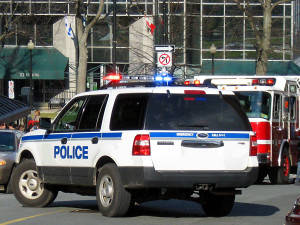Imagine you are walking down a public street and a police officer approaches you and expresses a desire to ‘ask a few questions.’ This is a scenario that plays itself out throughout the country. Police officers stop people on the street and conduct face to face questioning. They question people during car stops for traffic offenses. They may conduct questioning while making visits to a home or office. Sometimes, they may ask individuals to come down to the station or they may contact people over the phone. The first pressing question is whether a policeman can stop you on the street and question you even if there is no reason to suspect any wrongdoing.
The answer is ‘Yes’. Even without a reasonable suspicion, law enforcement can approach people for questioning and even ask to search objects in your possession. However, a line is drawn if the officer suggests you MUST talk to them or allow them to search your person or possessions. This is impermissible under the Supreme Court’s ruling in US v. Dayton. The rule of thumb is that a person is not generally required to answer inquiries from law enforcement or submit to a search.

There are exceptions where law enforcement will ask for identification. Most states have “stop and identify” which allows law enforcement to detain individuals and request identification provided there is a reasonable suspicion of criminal acitivity. Under Texas penal code, Section 38.02 , a person commits an offense if he refuses to give identifying information to a police officer who has lawfully arrested him. The general rule of thumb if you are unsure is to provide only your name, date of birth, and residence when asked. However, beyond this information, you have a Fifth Amendment right to remain silent. You cannot be punished for refusing to answer questions beyond identifying questions. Recent Supreme Court decisions have stated that you must verbally assert your right to remain silent with a simple “I invoke my right to remain silent.”
 San Antonio Injury Attorney Blog
San Antonio Injury Attorney Blog




